Table of Contents
Imagine gardening year-round with vibrant blooms, lush greenery, and even homegrown citrus—all in the comfort of portable pots. In USDA Zone 9, where mild winters give way to scorching summers, container gardening isn’t just a hobby; it’s a smart solution. The region’s unique climate—think warm, frost-free winters and hot, often humid summers—offers endless possibilities, but it also demands careful planning. Containers let you control soil, water, and placement, making them perfect for thriving in Zone 9’s heat.
This guide is your roadmap to creating stunning container gardens tailored specifically for Zone 9. From plant picks to pro tips, we’ve packed it with actionable advice to transform your patio, balcony, or backyard into a flourishing oasis.
Key Principles for Zone 9 Container Gardens
Success starts with understanding Zone 9’s quirks and setting up your containers right. Here’s what you need to know.


Climate Considerations
Zone 9’s hot summers (often exceeding 90°F) and mild winters (rarely dipping below 20°F) shape your plant choices. Heat and humidity can stress plants, so opt for heat-tolerant varieties. Microclimates matter too:
- Sun-exposed patios suit sun-lovers like succulents or tomatoes.
- Shaded spots favor ferns or herbs like mint.
Soil Mix Recipes
A well-draining soil mix is non-negotiable in Zone 9, where heat can make soggy soil a recipe for root rot. Try this blend:
- 2 parts potting soil (organic, peat-based works best)
- 1 part perlite (boosts drainage and aeration)
- 1 part compost (adds nutrients)
“Well-draining” means water flows through without pooling, keeping roots healthy in humid conditions.
Container Materials & Sizes
Your pot choice affects moisture and style:
- Terracotta: Dries fast—great for succulents, but water more often in summer.
- Plastic: Holds moisture but can overheat; use in shadier spots.
- Glazed ceramic: Balances moisture and looks sleek.
Sizes depend on plants:
- Herbs or small annuals: 6-10 inch pots
- Tomatoes or shrubs: 12-18 inch pots
- Citrus trees: 15-gallon pots minimum
5 Container Ideas with Plant Combinations
Here are few ideas to inspire your Zone 9 container garden, each with specific plants, care details, and budget-friendly twists.
1. Tropical Citrus Showcase
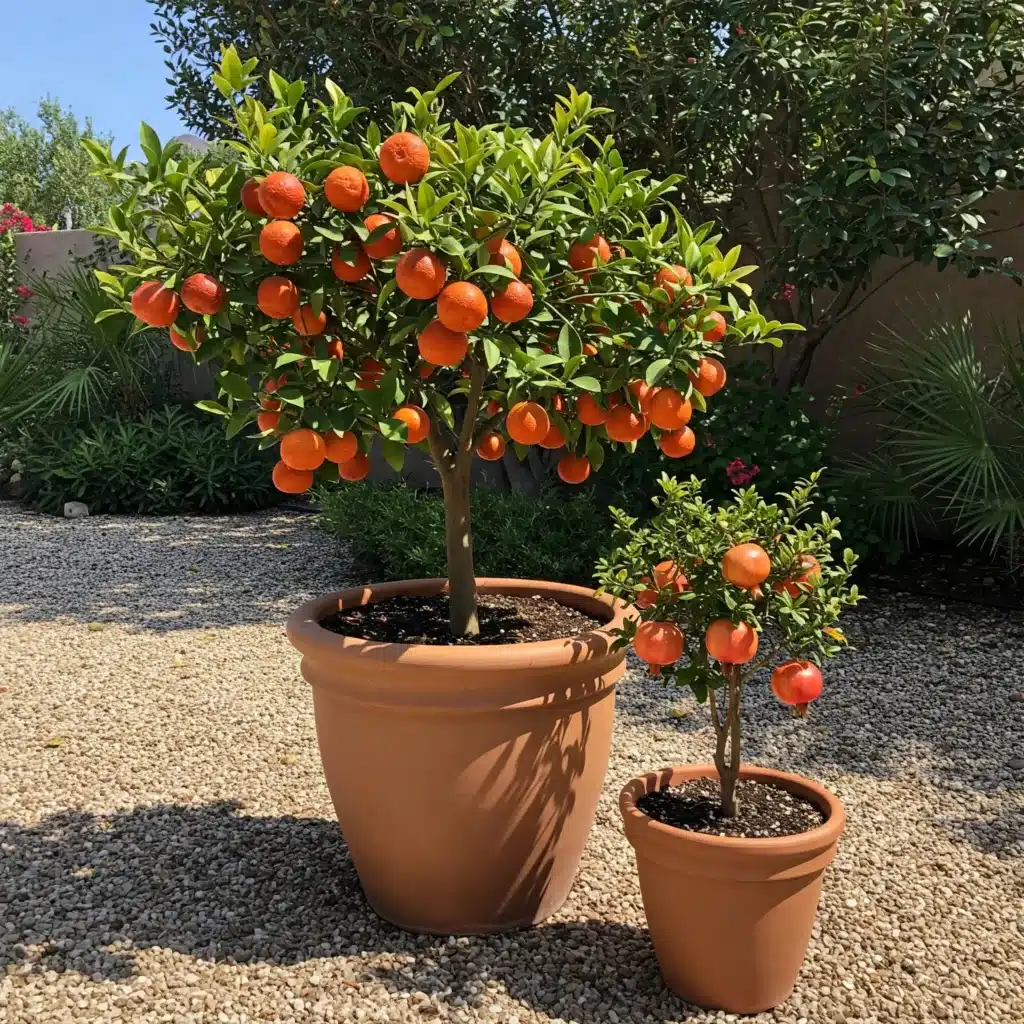

- Plants: Citrus sinensis ‘Moro’ (Blood Orange), Punica granatum ‘Nana’ (Dwarf Pomegranate)
- Sunlight: 6-8 hours daily
- Water: Moderate; water when top inch of soil dries
- Soil: Acidic mix (add peat moss to Section 1 recipe)
- Visual: Tall citrus in a 15-gallon glazed pot, dwarf pomegranate in a 10-inch terracotta pot beside it, gravel base visible.
- Budget Option: Swap Blood Orange for a cheaper kumquat (Citrus japonica).
2. Edible Herb & Veggie Combo
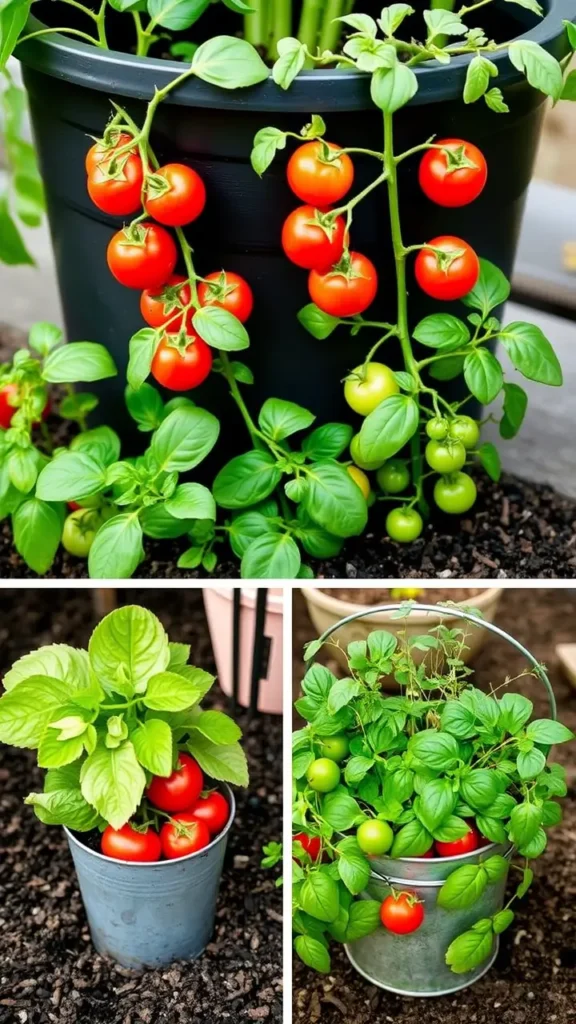

- Plants: Thai basil (Ocimum basilicum), cherry tomatoes (Solanum lycopersicum), ‘Green Romaine’ lettuce (Lactuca sativa)
- Sunlight: 5-6 hours (partial shade for lettuce)
- Water: Keep soil moist but not soggy
- Soil: Organic-rich mix with worm castings
- Visual: 18-inch plastic pot with tomatoes in the center, basil and lettuce spilling over the edges.
- Care Tip: Rotate weekly for even sun.
- Budget Option: Use a recycled bucket instead of a new pot.
3. Drought-Tolerant Succulent Arrangement
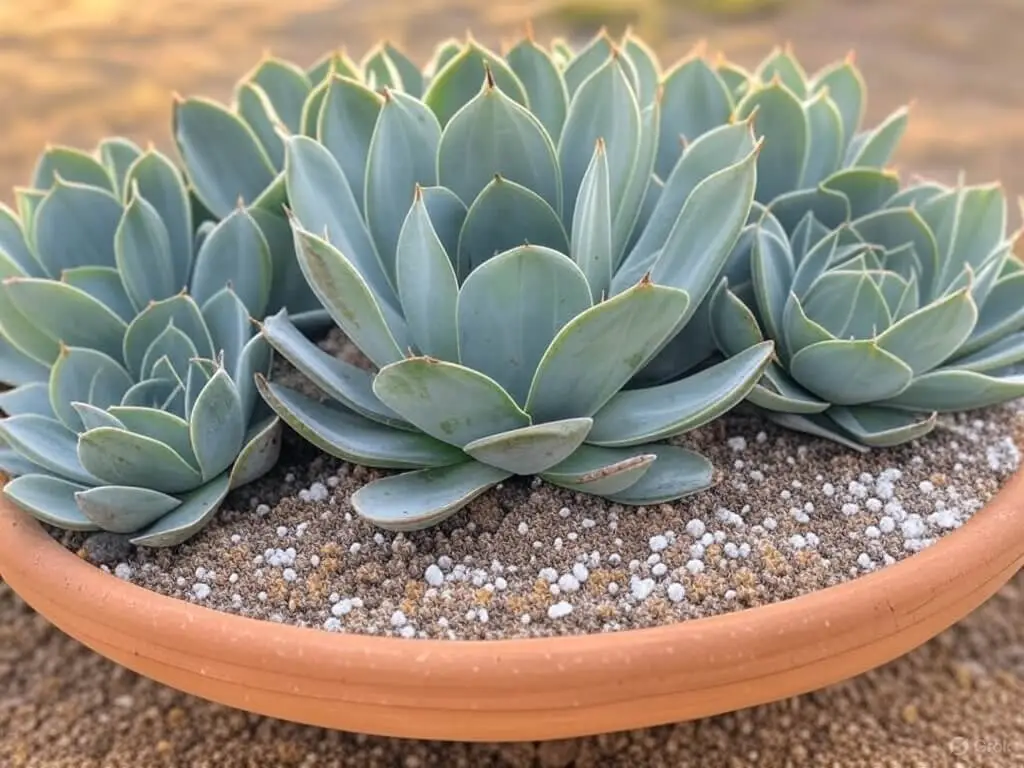

- Plants: Agave victoriae-reginae (Queen Victoria Agave), Echeveria ‘Perle von Nürnberg’
- Sunlight: 6+ hours
- Water: Low; water deeply every 2-3 weeks
- Soil: Cactus mix with added grit
- Visual: Shallow 12-inch terracotta dish, agave as focal point, echeverias clustered around, topped with pebbles.
- Hack: Wide, shallow pots mimic desert conditions.
- Budget Option: Propagate echeverias from leaf cuttings.
4. Mediterranean Herb Garden


- Plants: Rosmarinus officinalis (Rosemary), Lavandula angustifolia (Lavender), Thymus vulgaris (Thyme)
- Sunlight: 6-8 hours
- Water: Low; water when soil dries fully
- Soil: Well-draining mix with extra sand
- Visual: Three 8-inch terracotta pots grouped on a tray, herbs at varying heights.
- Budget Option: Grow from seeds (takes longer but saves money).
5. Shade-Loving Fern Oasis


- Plants: Athyrium filix-femina (Lady Fern), Dryopteris erythrosora (Autumn Fern)
- Sunlight: 2-4 hours or full shade
- Water: High; keep soil consistently moist
- Soil: Rich mix with extra compost
- Visual: 12-inch glazed pot with ferns spilling over, placed under a patio awning.
- Budget Option: Thrift mismatched ceramic pots for charm.
(Additional Ideas take a look on our Pinterest)
Advanced Care & Troubleshooting
Keep your containers thriving with these Zone 9-specific strategies.
Pest Management
- Aphids: Blast off with water, then apply neem oil weekly.
- Snails: Sprinkle diatomaceous earth around pots; reapply after rain.
- Spider mites: Increase humidity with morning mists.
Seasonal Adjustments
- Summer: Mist heat-stressed plants early daily; move pots to afternoon shade if wilting occurs.
- Winter: Cover citrus with frost cloth during rare cold snaps (below 25°F) or bring indoors.
Pruning & Repotting
- Pruning: Trim citrus in late winter (February) to remove dead wood and shape.
- Repotting: When roots circle the pot:
- Gently remove plant.
- Trim circling roots.
- Repot in a 2-3 inch larger container with fresh mix.
- Water thoroughly.
Sustainability & Budget Tips
Go green and save green with these hacks.
Upcycle Containers
- Drill holes in old buckets, wheelbarrows, or wine barrels for quirky, free planters.
Rainwater Harvesting
- Place a barrel under a downspout to collect runoff. Use this free water for your pots.
Composting in Small Spaces
- Start a worm bin with kitchen scraps. The resulting vermicompost is perfect for containers.
Visual Guide & FAQs
Make it visual and clear up confusion.
Infographic: Ideal Container Layers
- Bottom: 1-2 inches gravel
- Middle: Soil mix from Section 1
- Top: Plant + thin mulch layer
Comparison Chart: Zone 9-Friendly Plants
| Plant | Water Needs | Sun Tolerance | Growth Rate |
|---|---|---|---|
| Succulents | Low | High | Slow |
| Citrus | Moderate | High | Moderate |
| Herbs | Low-Moderate | Moderate-High | Fast |
| Ferns | High | Low | Moderate |
FAQs
- How often should I fertilize Zone 9 containers?
Every 4-6 weeks with a balanced, slow-release fertilizer (e.g., 10-10-10). - What’s the best container for Mediterranean herbs?
Terracotta—its porosity mimics their dry, rocky origins.
Conclusion
Zone 9 container gardening is a breeze with the right know-how. Recap these takeaways:
- Use well-draining soil to beat the heat.
- Pick plants that love sun and tolerate humidity.
- Stay on top of pests with organic fixes.
Resource Links
- Read more: How You Can Turn Your Backyard Into a $10K/Month Business
- External Link: Local Nursery Partners
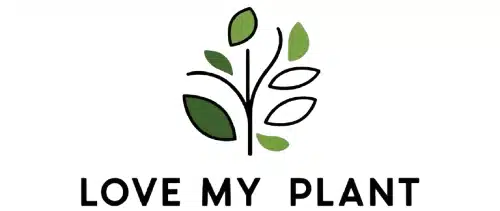
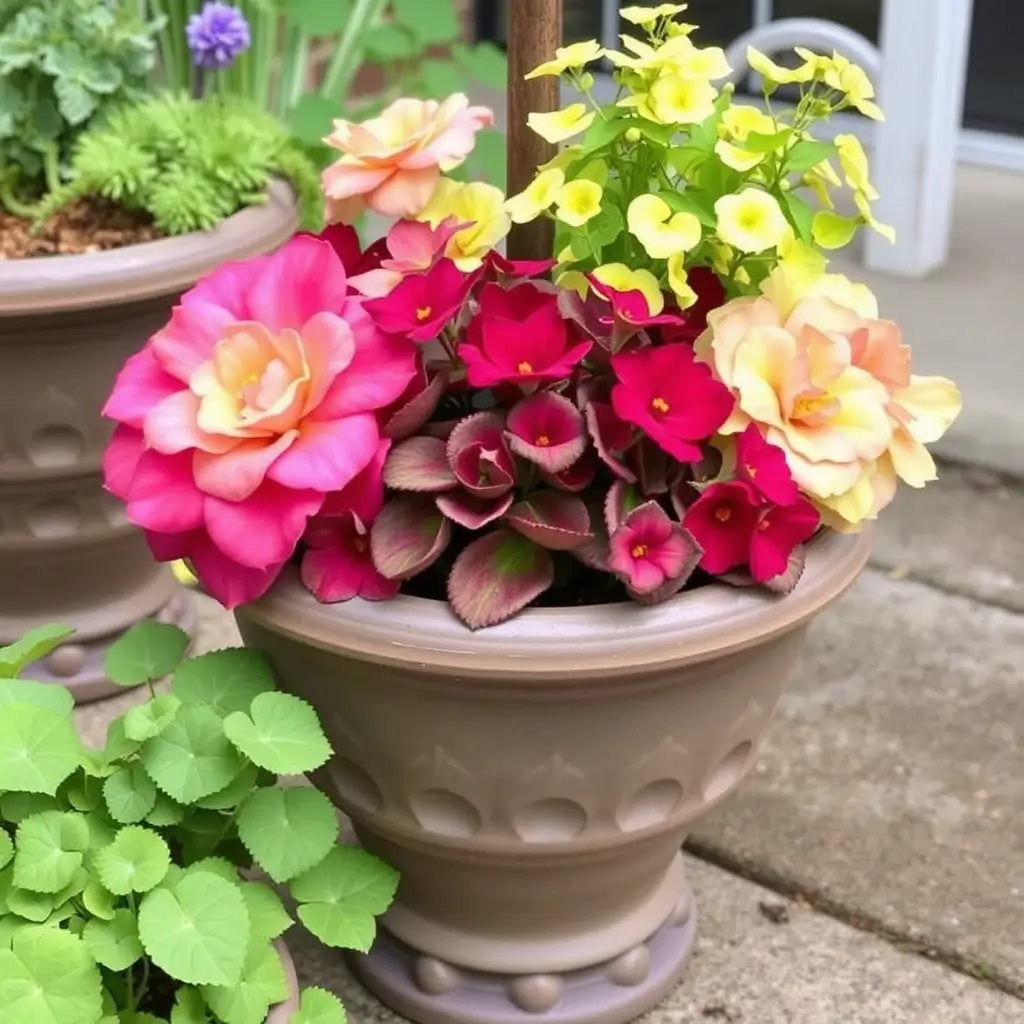
Hi, I think your website might be having browser compatibility issues. When I look at your blog in Firefox, it looks fine but when opening in Internet Explorer, it has some overlapping. I just wanted to give you a quick heads up! Other then that, awesome blog!
We’re sorry for the hiccup with IE and truly appreciate you pointing it out. Our technical team is already on the case to resolve the overlapping issue, and we’ll make sure everything looks seamless across all browsers. Feel free to check back soon, and please don’t hesitate to reach out if you spot anything else! Thanks again for supporting the blog—your input helps us grow!